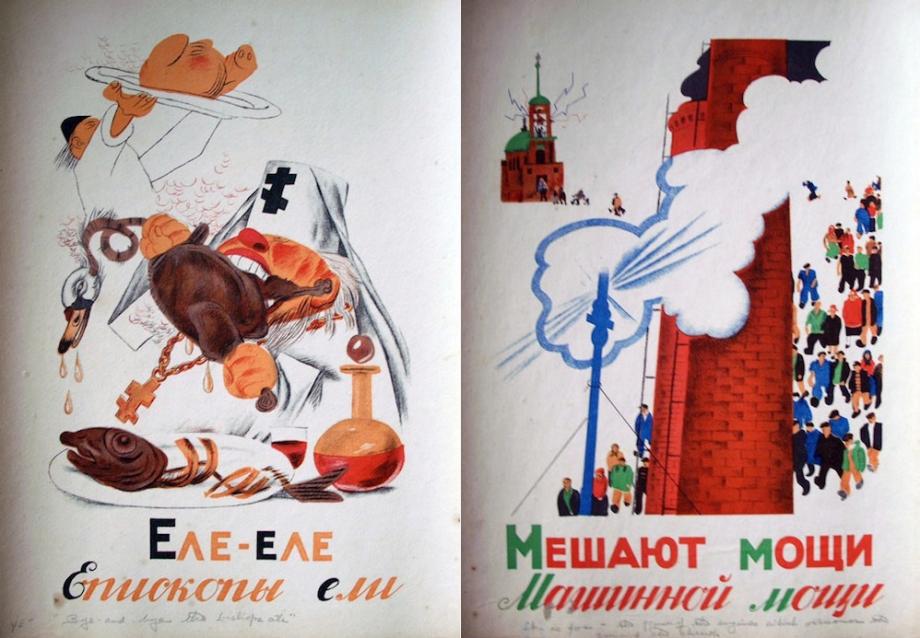The Vault is Slate’s history blog. Like us on Facebook, follow us on Twitter @slatevault, and find us on Tumblr. Find out more about what this space is all about here.
Here are four pieces of anti-religious propaganda published in the young Soviet Union. These are undated, and the artist’s name has been lost, but it’s likely that they were printed and distributed during the 1920s or 1930s, when the newly empowered Bolsheviks made the elimination of religious power one of their main goals.
In a post on the excellent Web archive Seventeen Moments in Soviet History, historian James von Geldern catalogs the steps that the new Communist Party took during the 1920s to dismantle the cultural power of the Orthodox Church (as well as that of the Islamic and Jewish authorities in Ukraine and Belarus).
The early years of the decade saw officially sanctioned destruction of church buildings and property, as well as violence against priests. Later, the government attempted to persuade people to leave religion behind through culture: films, books, newspapers, and art.
Soviet officials focused, in particular, on the rural peasantry, thought to cling more closely to religious belief. These four caricatures appear to appeal to the class-consciousness of this group of laborers.
Two images feature a monocled fat cat, sitting on the shoulders of a bent-over man and wielding a whip, or spraying a group of believers with a tank of gas reminiscent of the chemical weapons recently used in World War I. In another illustration, a bishop wearing his church robes makes gluttonous inroads into a duck carcass, while anticipating the arrival of a pig’s head at table.
In the last image, a church’s dwindling attendance contrasts poorly with the throngs of people entering a factory—a wishful vision from a government that celebrated industrial technology as national liberation.
Thanks to Princeton’s Graphic Arts Librarian Julie Mellby, who posted these images on her collections blog, for her help.

L: “The voice of God is intended for the rich.” R: “Belief is harmful, more harmful than wine.”
Graphic Arts Collection, Department of Rare Books and Special Collections, Princeton University Library.

L: “Bye-and-bye the bishops ate.” R: “The power of the engines which overcomes the power of the church.”
Graphic Arts Collection, Department of Rare Books and Special Collections, Princeton University Library.